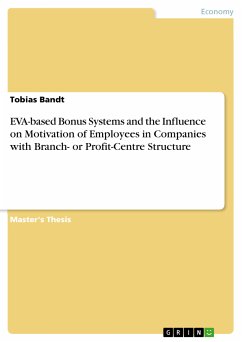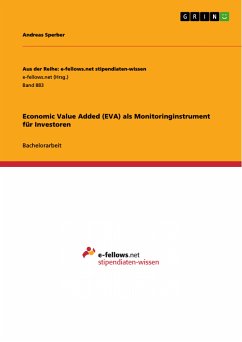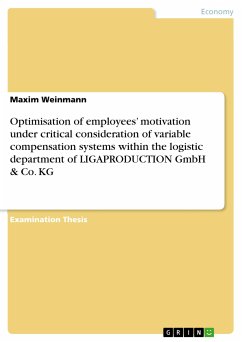Master's Thesis from the year 2010 in the subject Leadership and Human Resources - Miscellaneous, grade: 1,8, Ashcroft International Business School Cambridge (Anglia Ruskin University), language: English, abstract: EVA-based Bonus Systems and the Influence on Motivation of Employees in Companies with Branch- or Profit-Centre Structure Tobias Bandt Since the beginning of the Industrial Revolution in the early the 20th century, companies have tried to find ways to motivate their staff and, through that, increase performance and productivity. Despite several theories that consider monetary incentives as not being a motivator it is still very common practice for companies to motivate their employees using profit participation schemes. Companies and organisational structures have significantly changed in the last 50 years. Is it still possible to measure and influence the performance of the individual? And what is the assessment based on? Is the approach of profit participation sustainable and contemporary? Even in times of globalisation, companies try to delegate responsibility to their business units and branches in order to measure performance and make them comparable. Therefore, they organise them as profit-centres, small organisational units which act like a company within a company. Economic Value Added (EVA) promises to measure more than the profit of a unit; it considers the added value of a branch to the company, shareholders and customers. This Master thesis aims to provide an overview of EVA, how it works and how it influences the motivation of people who work in branches that are organised as a profit-centre. It also analyses the influence of EVA-based incentive systems on the cooperation between branches and regions and, further, assesses the influence of fairness and transparency on the motivation. The research project is supported by a survey, conducted among branches of DIS AG, a company that has been using EVA for eight years as a basis for the calculation of monetary incentives. The survey covers three areas of EVA’s impact on employees: the influence on motivation in general, on cooperation between branches and the influence of transparency and fairness. The results of this survey are used to develop recommendations for adapting the system in order to maximise the impact on employee motivation.








